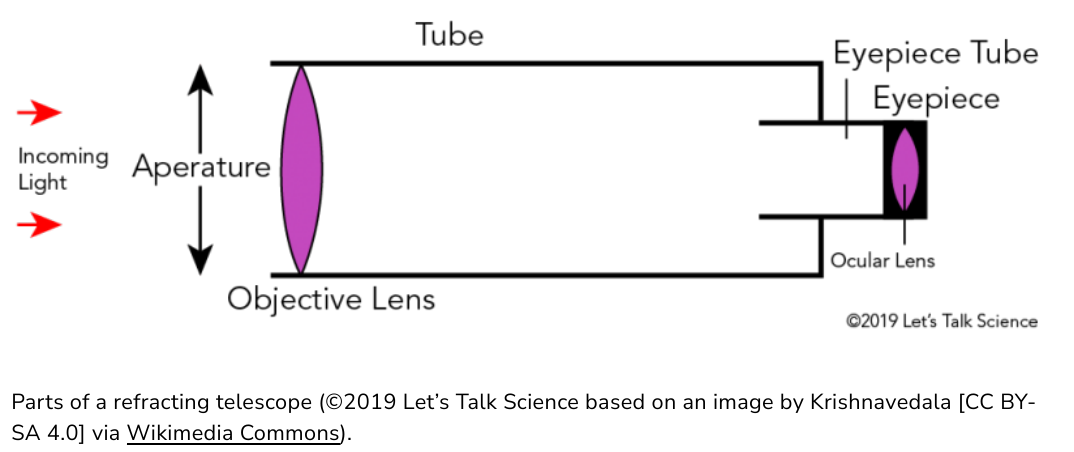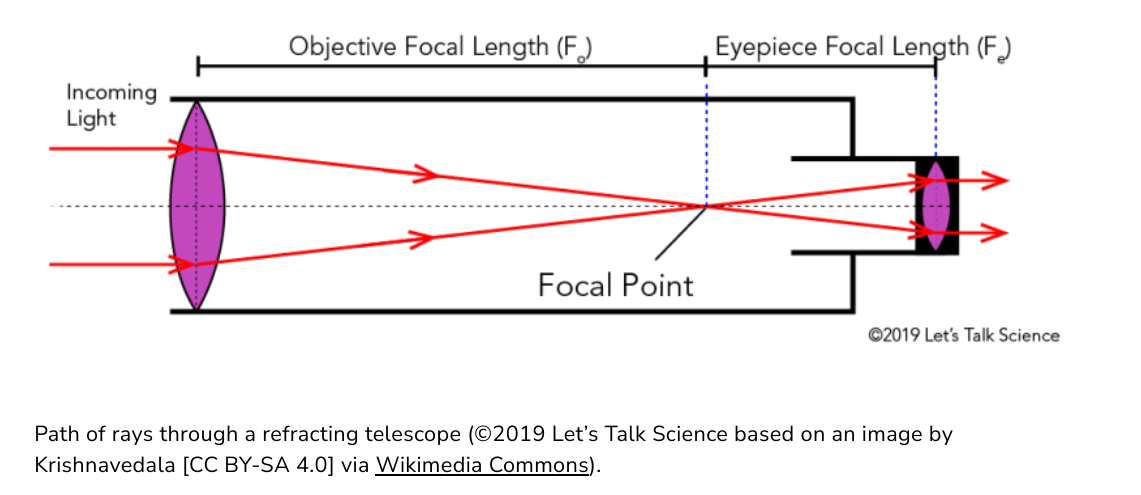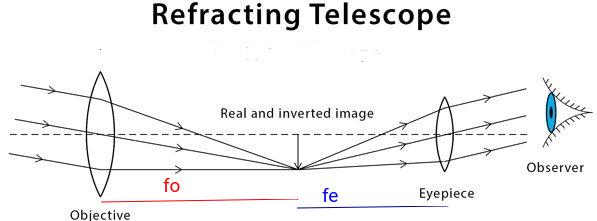- News & information
- About
- History
- George V. Voinovich
- George V. Voinovich Collection
- Calendar
- How to Find Us
- News
- Archives
- Photojournalism Fellowship Project
- Photo Essays
- Current Fellow
- Previous Fellows
- Reports and Publications
- Archives
- Students
- Prospective
- Center for Entrepreneurship
- Environmental Studies
- HTC/Voinovich School Scholars
- Master of Public Administration
- Current
- HTC/Voinovich School Scholars
- Center for Entrepreneurship
- Environmental Studies
- Master of Public Administration
- Alumni
- Contact
- School Leadership
- Strategic Partners Alliance
- Ohio University Public Affairs Advisory Committee
- Ohio University Public Affairs Advisory Committee
- Faculty and Fellows
- Faculty
- Visiting Professors
- Voinovich Fellows
- Professional Staff

Geometrical Optics

 The Refracting Telescope
The Refracting Telescope
 The Refracting Telescope
The Refracting Telescope
In this chapter we only consider optical telescopes . The earliest optical telescopes we know of were made in 1608 in the Netherlands by various optical craftsmen. One of them, Hans Lippershey, publicized his design well enough that the news reached Galileo Galilei in Italy 1609. When Galileo heard of the telescope, he built his own. Within a year, he had greatly improved Lippershey's design and promoted his own telescopes. He also observed Jupiter's largest moons. These are the reasons why when many people hear the words "invention of the telescope", they think of Galileo.
 How do optical telescopes work?
How do optical telescopes work?
 How do optical telescopes work?
How do optical telescopes work?
Let us consider a basic optical telescope. If you were looking to buy a telescope for yourself, you will learn that there are two basic designs:
- refracting telescopes , also known as refractors
- reflecting telescopes , also known as reflectors
Most modern observatories use reflectors because their telescopes are so huge. Refractors would not be practical, since their lenses would be very have and their tubes very long. The larges refractive telescope every constructed for astronomical research is housed in the Yerkes Observatory in Williams Bay, Wisconsin. It's main lens has a diameter of 1.02 m, and the main tube is 18 m long.
 What are the parts of a refracting telescope?
What are the parts of a refracting telescope?
 What are the parts of a refracting telescope?
What are the parts of a refracting telescope?

In a refracting telescope, light enters the telescope near the objective lens. The objective lens is a convex lens . This lens converges the light at the focal point of the lens. From that point on they begin to diverge again. A second convex lens in the eyepiece takes the converging light and straightens it back out. ( Review ray rules for convex (converging) lenses. ). This process magnifies the image at the focal point and brings it into focus. For that reason a refracting telescope needs to have a long path to allow the light rays to bend.

 Ray tracing in the refracting telescope
Ray tracing in the refracting telescope
 Ray tracing in the refracting telescope
Ray tracing in the refracting telescope

The incoming parallel rays from are focused in the second focal plane of the objective (behind the objective lens). This intermediate image must lie in the first focal plane (in front) of the eyepiece in order to have parallel outgoing rays.
Thus, the spacing between the two lenses L must equal the sum of the two focal lengths, f o + f e .
The magnification of a telescope is large if the intermediate image is large, and if this image is viewed through an eyepiece (magnifying glass) of large magnificationr:
However, increasing the intermediate image's distance from the objective spreads the incoming light over the larger intermediate image, which thus becomes dimmer. This is unfortunate because a telescope is often used to look at objects that are dim to begin with, making light-gathering ability important. In order for a longer focal length objective to produce the same brightness as a shorter one, we must have a larger diameter in the former. That is, we get the same brightness if we keep the f-number the same (remember the camera!). Most astronomical telescopes of this type operate between f/12 and f/15. For this reason, a telescope is usually not specified by its focal length, but rather by the diameter of the objective lens. For example, we speak of a 6-inch telescope when we refer to one with a 6-inch objective diameter. The largest objective lens is in the 40-inch Yerkes Observatory telescope in Williams Bay, Wisconsin.
Ohio University is the home of a 10-inch telescope at the Ohio University Observatory , where you may catch a glimpse at the stars during a Public Telescope Night .

Dec 27 14:27:03 EDT 2021
Contact Information:
(740) 593–9381 | Building 21, The Ridges
Ohio University Contact Information:
Ohio University | Athens OH 45701 | 740.593.1000 ADA Compliance | © 2018 Ohio University . All rights reserved.
